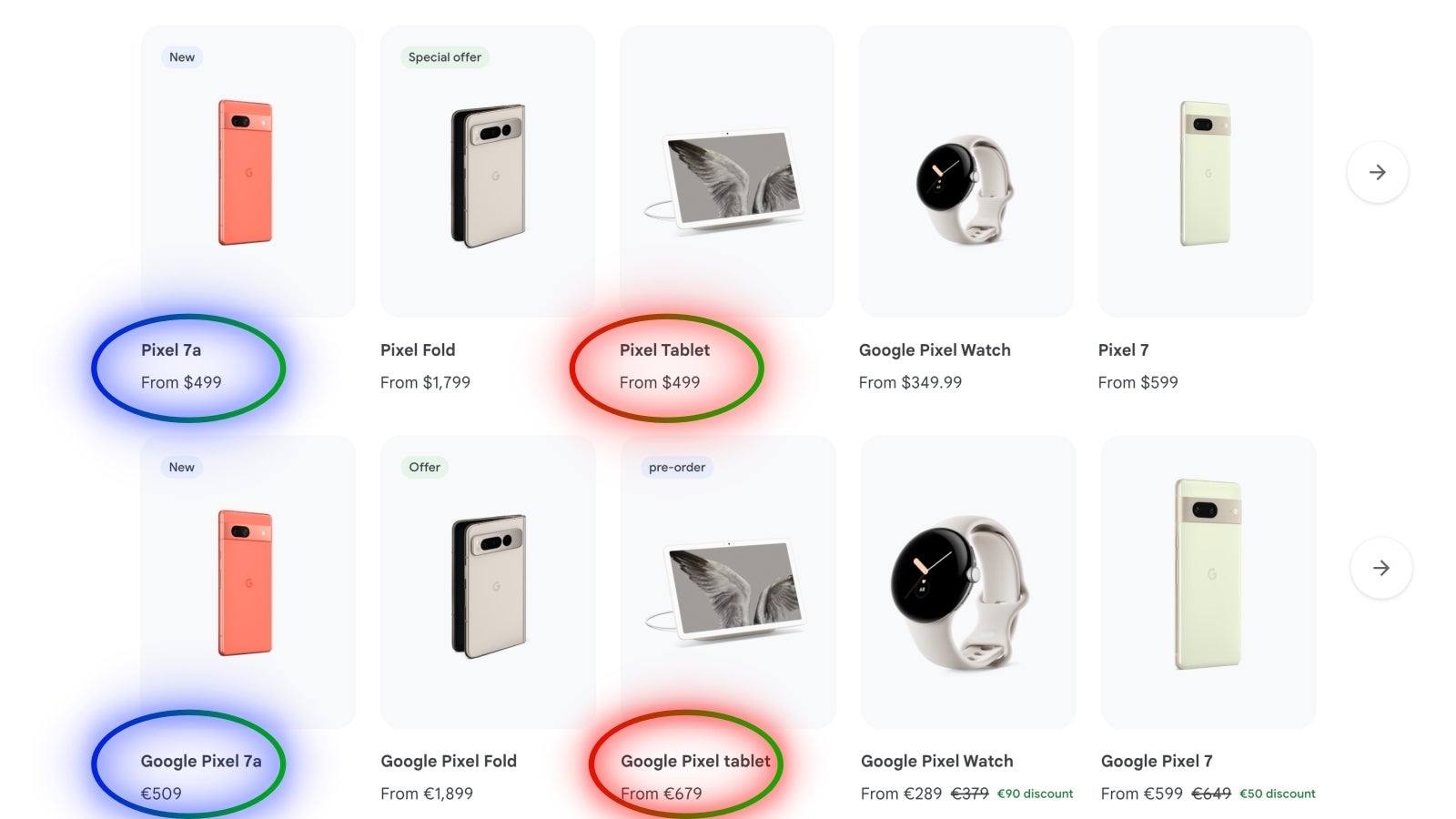Pixel Tablet: The worst Android tablet Google can make is the best Apple and Samsung never made
Here we are! It’s time to continue our conversation about Google’s brand new Pixel tablet. I concluded my first story by saying that I find it “more exciting than the Pixel Fold”, and I stand by that statement. But there is a “but”…
Again, you could argue that Google is basically reinventing the tablet by attaching it to a speaker charging dock, which (as the name suggests) can be used as a wireless charging stand, an external speaker and a Nest Hub – when the tablet is attached to it. And that’s really great. Hardware innovation in the phone/tablet world has become rarer over the years, so it’s really refreshing to see a new take on an existing product category. But like every tablet/smartphone in history, the Pixel Tablet doesn’t look like a perfect device. In fact, some of the omissions Google made could be potential deal breakers for certain types of users, while others make virtually no sense. But despite that, I think I still find the Pixel Tablet exciting, and I’m willing to give it a try! I guess what’s left is to take a look at some of Google’s controversial picks for yourself and decide if they’re a deal breaker or not…
The first potential deal-breaker (for display junkies) will be Google’s decision to remove the Pixel tablet with what appears to be a rather plain screen. For starters, the Pixel Tablet’s 11-inch display uses an LCD panel rather than OLED (which would have yielded deeper colors). But then we get to the possibly more disappointing part of the Pixel Tablet’s screen, which is the 60Hz refresh rate rather than a smoother 90/120Hz panel.
Don’t get me wrong, I don’t think a 60Hz screen is flat out unacceptable for a tablet, even in 2023. You don’t use a tablet the same way you use your phone – in other words, there’s not that much scrolling involved when using a tablet, especially one like the Pixel tablet, which appears to be designed to be used as a multimedia device, or even a Nest Hub (in which case it’s mostly static). I’m not trying to justify Google’s decision – rather I’m trying to make sense of it.
The tablets from Samsung and Apple don’t offer better displays than the Pixel Tablet; you need a OnePlus or Xiaomi tablet to get the best screen for $500 (or less)
That said, given the $500 price of the Pixel tablet and the fact that it comes with a bundled dock (valued at $129 according to Google), the 60Hz LCD display might not be that shocking after all. In fact, the Pixel Tablet’s closest competitors (made by Samsung and Apple) also don’t offer significantly better displays…
- The Pixel tablet costs $500 for 128 GB of storage and has an 11-inch IPS LCD display with a maximum brightness of 500 nits and a refresh rate of 60 Hz
- The Galaxy Tab S7 FE costs $500 for 128 GB of storage and has a 12.4-inch TFT LCD screen with a maximum brightness of 500 nits and a refresh rate of 60 Hz (the more expensive Galaxy Tab S8 has a similar screen, which is 11 inches tall)
- Both from Apple iPad (10th generation) and iPad Air (5th generation) comes with 11-inch LCD displays with a peak brightness of 500 nits and a refresh rate of 60 Hz; the iPad 10 costs $450, but that’s for 64 GB of storage (the next option is 256 GB for $600); the iPad Air 5 starts at $600 for $64 GB of storage ($750 gets you 256 GB)
Despite the fact that all of their $500 tablets come with average displays, that doesn’t mean Google, Apple, and Samsung shouldn’t do better. For example, Xiaomi’s $400-equivalent Xiaomi Pad 5 Pro and Pad 6 come with LCD panels with 120Hz and 144Hz refresh rates, making them feel much smoother than the Pixel Tablet, Galaxy Tab S8, or iPad 10/Air. The same goes for the new OnePlus Pad ($500), which also features a fast 144Hz display. So… Maybe Google, Apple and Samsung are stingy.
Is this 1990, Google? The Pixel tablet’s charging dock isn’t exactly the Nest Hub replacement some were hoping for; a charging station with an average speaker and no Bluetooth support

You can’t connect wirelessly to the Pixel tablet’s charging dock because it doesn’t support Bluetooth! Facepalm.
You can’t connect wirelessly to the Pixel tablet’s charging dock because it doesn’t support Bluetooth! Dutch electrical engineer Jaap Haartsen laid the foundation for Bluetooth wireless technology in 1994 so that Sundar Pichai & Co can kill it by 2023…
Now… This one can be attributed to my personal expectations (since Google never promised anything), but by far the most disappointing thing about the Pixel tablet has to be the fact that it’s not exactly the Nest Hub replacement some might have hoped for (some = me).
As it turns out, rather than glue a Pixel tablet and a Nest Hub together, Google has decided to severely limit the functionality of the Pixel tablet’s charging dock to exactly what its name suggests. Apparently the Charging Speaker Dock itself won’t be able to do much (like a Nest Hub), according to Google’s website:
- The charging speaker dock cannot connect to a second dock (for a more immersive audio experience, we recommend that the dock does not have a standard Bluetooth connection
- The charging speaker dock also cannot connect to other Google-compatible smart speakers or Nest Hubs
- As it turns out, the speaker driver in the Pixel Tablet’s dock measures 43.5mm, which is the same size driver as the one in the smaller Nest Hub, which isn’t exactly known for incredible sound quality.
Note that we don’t know any other details about the speaker situation on the Pixel Tablet, such as the power in watts, and whether Google has made any improvements to the speaker unit itself, or the soundstage created by the physical speaker enclosure. I suppose I’m trying to say we shouldn’t be disappointed. At least not yet.
Deal breaker? Outrageously high prices outside the US for Pixel tablets make absolutely no sense given Google’s affordable Pixel phones

The Pixel tablet starts at $500 in the US, £600 in the UK and a whopping €680 in Europe, where the $500 Pixel 7a costs $510. What happened here, Google?
Should the charging dock be an essential addition to the Pixel tablet, even if you decide you don’t want/need one? Some would have liked the option to buy a Pixel tablet without a dock — perhaps for $100 less than the $500 price for the bundle. And I can see why.
Finally, aside from the average screen and very limited docking functionality, the last notable weakness of the Pixel Tablet is the high price of the tablet in some parts of the world. Ironically, despite the great price of $500 for the Pixel Tablet dock bundle in the US, those in Europe and the UK won’t be able to enjoy the same great deal – not even close. The Pixel tablet starts at £600 in the UK and a whopping €680 in Germany and the rest of Europe. But hey, at least Google sells the Pixel Tablet in those countries. Availability of Google devices is limited as always. The reason those prices make little to no sense (at least to me) is because Google’s pricing strategy for their Pixel phone line is the direct opposite of what we’re seeing with the tablet. Take the Pixel 7a, which made its global debut alongside the Pixel Tablet:
- Pixel 7a starts at $500 in the US, £450 in the UK and €510 in Europe
- Pixel tablet starts at the same $500 in the US, £600 in the UK and €680 in Europe
Speaking of pricing, the price of the Pixel Tablet charging dock (let’s assume you want to buy an extra one or a replacement) is $129, which seems ridiculously high considering (as we’ve established) the dock doesn’t have any of the functionality of a Nest Hub ($99) when the Pixel tablet isn’t connected to it, or even a simple Bluetooth connection. The practical Pixel Tablet case/stand accessory that Google introduced is also rather pricey ($80).
Ultimately, the lack of a standard Bluetooth connection, making it impossible to connect the charging dock to a second dock, a Nest Hub, Nest Audio or Nest Mini, means that the dock (which should make the Pixel Tablet special) will probably be practically useless if the tablet is not attached to it. And that’s not a bueno.
And while I can forgive the tiny speaker driver, I don’t see why Google wouldn’t give the Pixel Tablet Dock a standard Bluetooth connection so you can do basic things like listen to music wirelessly or connect the dock to another speaker for a more immersive sonic experience. experience. What is this, Google? 1990?
Nevertheless, I’m eager to give the Pixel Tablet a try as I find the dock idea quite intriguing. Giving a tablet a dedicated home, where it lives and charges when not in use, seems like a brilliant move. And who knows – maybe Google will stick with the advanced version of the charging dock and high refresh rate display for the 2nd gen Pixel tablet?
Anyway, welcome back to the tablet game, Google and Android! Nice to have you back.













